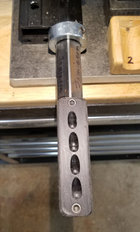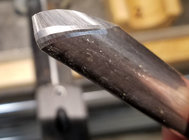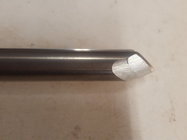The title pretty much says it all. I keep getting the lighter streaks that show up across the end grain areas near the lip of bowls once I start sanding. I try to be careful about bevel pressure when cutting, to float the bevel rather than "riding" it, but the problem persists. I'd like to be able to blame the wood, impurities in the steel of my tools, increased sun spot activity, or my misspent youth, but I suspect it boils down to operator error on my part.
Any suggestions or advice?
Trying a different hobby is out, so don't bother with that one. I'm hopelessly addicted to woodturning and you're all complicit in it.

Any suggestions or advice?
Trying a different hobby is out, so don't bother with that one. I'm hopelessly addicted to woodturning and you're all complicit in it.



